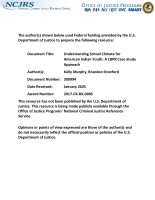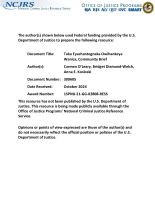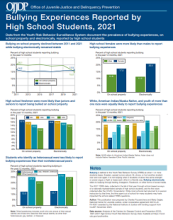American Indians or Alaska Natives
NamUs and Tribal Communities
The National Missing and Unidentified Persons System (NamUs) is a national centralized repository and resource center for missing, unidentified, and unclaimed person cases across the United States. NamUs recognizes the need for additional support for tribal communities and has dedicated resources to address missing and unidentified Indigenous persons cases.
See the YouTube Terms of Service and Google Privacy Policy
Drug Use Impact on Native People in Minnesota
This presentation will review substance use disorder treatment admissions and impacts on Native people residing in Minnesota. Special attention will be paid to geographic areas of the state impacted and specific illegal substances prominent with Native people in Minnesota using both treatment admission and overdose data.
This webinar was hosted by the NIJ Forensic Technology Center of Excellence on May 10, 2022.
See the YouTube Terms of Service and Google Privacy Policy
Assessment of a microhaplotype panel for human identification and ancestry inference in Brazil
Identifying the Scope and Context of Missing and/or Murdered Indigenous Persons (MMIP) in New Mexico and Improving MMIP Data Collection, Analysis, and Reporting
Demographic History of Indigenous Populations in Mesoamerica Based on mtDNA Sequence Data
Understanding School Climate for American Indian Youth: A CBPR Case Study Approach
Large-scale Selection of Highly Informative Microhaplotypes for Ancestry Inference and Population Specific Informativeness
Taku Eyachantognaka Owihankeya Wanica, Workshop Presentation
Taku Eyachantognaka Owihankeya Wanica, Community Brief
Taku Eyachantognaka Owihankeya Wanica, Community Brief 2
Advancing Justice for the Missing and Unidentified Through Research - 2024 NIJ Research Conference
Forensic science research is developing essential knowledge to fill in the holes in death investigations, creating new ways to identify challenging skeletal remains. These methods inform cause of death, time of death, and familial relationships to guide investigations, identify suspects, support prosecutions, and bring justice to families.
See the YouTube Terms of Service and Google Privacy Policy







